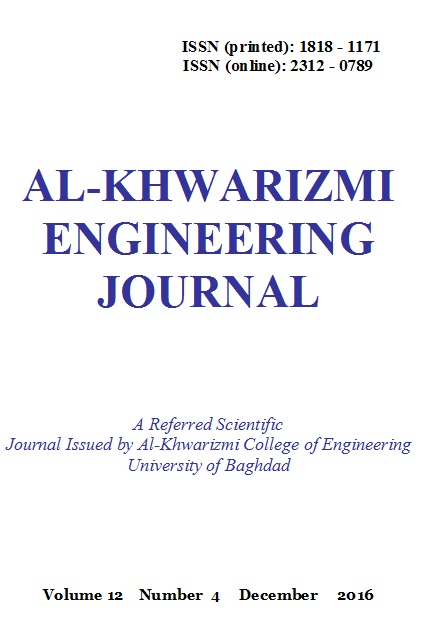Experimental and Numerical Study of Collector Geometry Effect on Solar Chimney Performance
DOI:
https://doi.org/10.22153/kej.2016.05.002Keywords:
Solar chimney, Collector, Mathematical modeling, Numerical simulation, Enhance performanceAbstract
There have been many advances in the solar chimney power plant since 1930 and the first pilot work was built in Spain (Manzanares) that produced 50 KW. The solar chimney power plant is considered of a clean power generation that needs to be investigated to enhance the performance by studying the effect of changing the area of passage of air to enhance the velocity towards the chimney to maximize design velocity. In this experimental and numerical study, the reduction area of solar collector was investigated. The reduction area that mean changing the height of glass cover from the absorbing plate (h1=3.8cm, h2=2.6cm and h3=1.28cm). The numerical study was performed using ANSYS Fluent software package (version 14.0) to solve governing equations. The aim of this work was to study the effect of change the height of reduction area to the design velocity (velocity move the blade of turbine at inlet in the chimney). The results showed that the third height (h3=1.28cm) gives the best result because when decreasing the height between the glass cover and absorbing plate, the area between them decreased and the design velocity increased then the efficiency of solar chimney model was increased.
Downloads
Downloads
Published
Issue
Section
License
Copyright: Open Access authors retain the copyrights of their papers, and all open access articles are distributed under the terms of the Creative Commons Attribution License, which permits unrestricted use, distribution, and reproduction in any medium, provided that the original work is properly cited. The use of general descriptive names, trade names, trademarks, and so forth in this publication, even if not specifically identified, does not imply that these names are not protected by the relevant laws and regulations. While the advice and information in this journal are believed to be true and accurate on the date of its going to press, neither the authors, the editors, nor the publisher can accept any legal responsibility for any errors or omissions that may be made. The publisher makes no warranty, express or implied, with respect to the material contained herein.
















